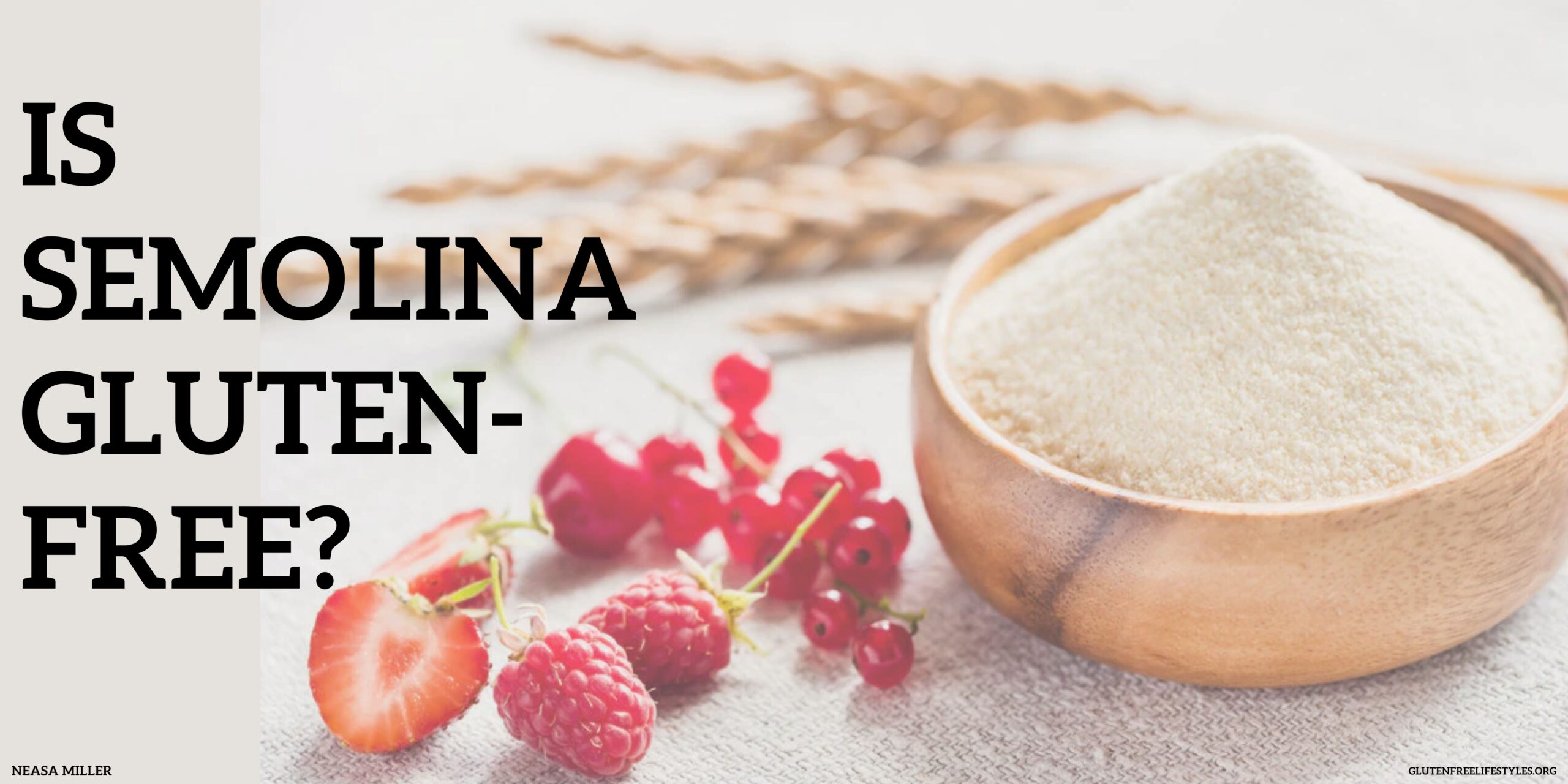Semolina is a staple in many culinary traditions, especially Italian and Indian cuisines. Known for its distinctive texture and versatility, semolina is often used to make pasta, bread, and desserts. However, if you have a gluten intolerance or celiac disease, you might be concerned about whether semolina is safe for you. In this article, we’ll dive into what semolina is, its gluten content, and what alternatives you might consider.
No, semolina is not gluten-free. If you’re considering semolina for a gluten-free diet or have celiac disease, it’s crucial to know that semolina is made from durum wheat, which contains gluten. In this article, we’ll delve into what semolina is, why it’s not suitable for gluten-free diets, and alternative options available.
What is Semolina?
Semolina is a flour derived from durum wheat, a hard variety of wheat known for its high gluten content. It is commonly used in pasta, couscous, and various baked goods. Semolina has a coarse texture and a yellowish color, which is attributed to the carotenoids present in durum wheat. Its use is prevalent in many traditional dishes, especially in Italian and Middle Eastern cuisines.
Why Semolina Contains Gluten
Gluten is a group of proteins found in wheat and related grains, including barley and rye. It is what gives dough its elasticity and helps it rise. Semolina’s gluten content comes from the durum wheat used in its production. During processing, the gluten proteins are retained in the semolina flour, making it unsuitable for those who need to avoid gluten. This is important for individuals with celiac disease or non-celiac gluten sensitivity, as even trace amounts of gluten can trigger symptoms.
Gluten-Free Alternatives to Semolina
If you need to avoid gluten, several alternatives to semolina can be used in recipes:
- Rice Flour: A versatile substitute, rice flour works well in many baking and cooking applications, offering a similar texture to semolina.
- Cornmeal: Made from ground corn, cornmeal is another great option for gluten-free recipes. It has a slightly different texture but can work well in many dishes.
- Almond Flour: For a richer, nutty flavor, almond flour can be used in baking. It is made from finely ground almonds and is naturally gluten-free.
- Chickpea Flour: Also known as besan or gram flour, chickpea flour provides a unique flavor and texture and is a good gluten-free option for various recipes.
- Sorghum Flour: Sorghum flour is made from whole grain sorghum and is a good source of protein and fiber. It is a versatile gluten-free flour that can be used in various recipes.
How to Replace Semolina in Recipes
When substituting semolina in recipes, it’s important to consider the texture and flavor of the alternatives. For instance, if using rice flour or cornmeal, you might need to adjust the liquid content in the recipe, as these flours can absorb moisture differently than semolina. Additionally, when baking, gluten-free flours often require binding agents like xanthan gum or guar gum to achieve the right texture.
Checking Product Labels
For packaged goods and processed foods, always check the ingredient list and labels for gluten content. Many products may contain semolina or other wheat-based ingredients that are not immediately obvious. Look for products labeled “gluten-free” to ensure they meet your dietary needs.
Your Path to Delicious Possibilities
In summary, semolina is not gluten-free and is made from durum wheat, which contains gluten. If you’re looking for gluten-free alternatives, options such as rice flour, cornmeal, almond flour, and chickpea flour can be suitable replacements depending on the recipe. Always read labels carefully and adjust recipes as needed to accommodate gluten-free ingredients.
The key to successful gluten-free cooking and baking lies in experimentation and adaptation. Don’t hesitate to try new recipes and techniques to find what works best for you. With the right substitutes and a bit of creativity, your gluten-free kitchen can be as satisfying and enjoyable as ever. Embrace these alternatives and continue to explore the exciting world of gluten-free cuisine!
FAQs
1. Can I eat semolina if I have gluten sensitivity?
No, if you have gluten sensitivity, it’s best to avoid semolina, as it contains gluten, which can trigger symptoms.
2. Are there any gluten-free semolina substitutes?
Yes, gluten-free alternatives to semolina include rice flour, cornmeal, chickpea flour, almond flour, and sorghum flour.
3. Can I use semolina flour in gluten-free baking?
No, semolina flour is not suitable for gluten-free baking due to its gluten content. Use gluten-free flour instead.
4. How can I adjust recipes that call for semolina to be gluten-free?
You can adjust recipes by substituting semolina with gluten-free flour and adding binding agents like xanthan gum or guar gum to mimic the texture that gluten provides.
5. What should I look for when buying gluten-free flour?
Look for gluten-free flours labeled as such and check the ingredient list to ensure they do not contain any hidden sources of gluten.



